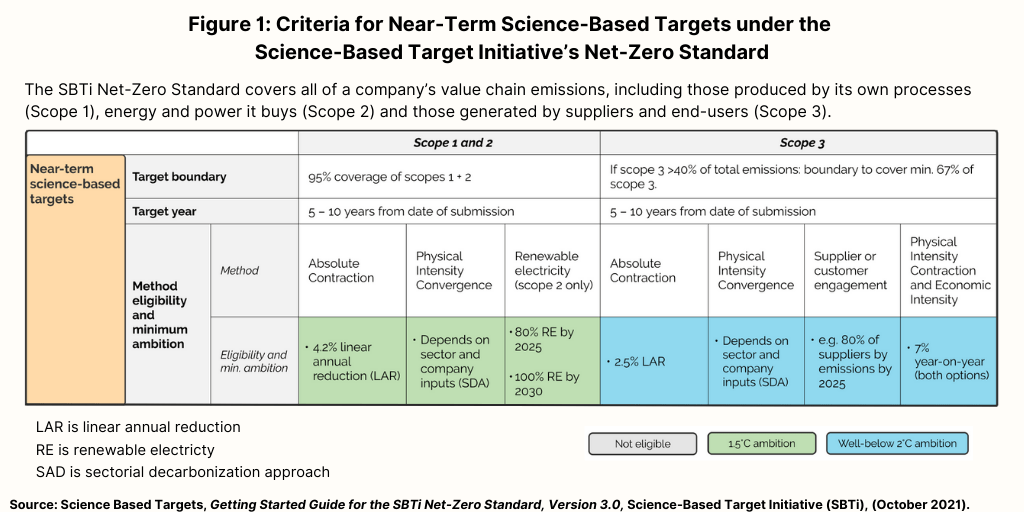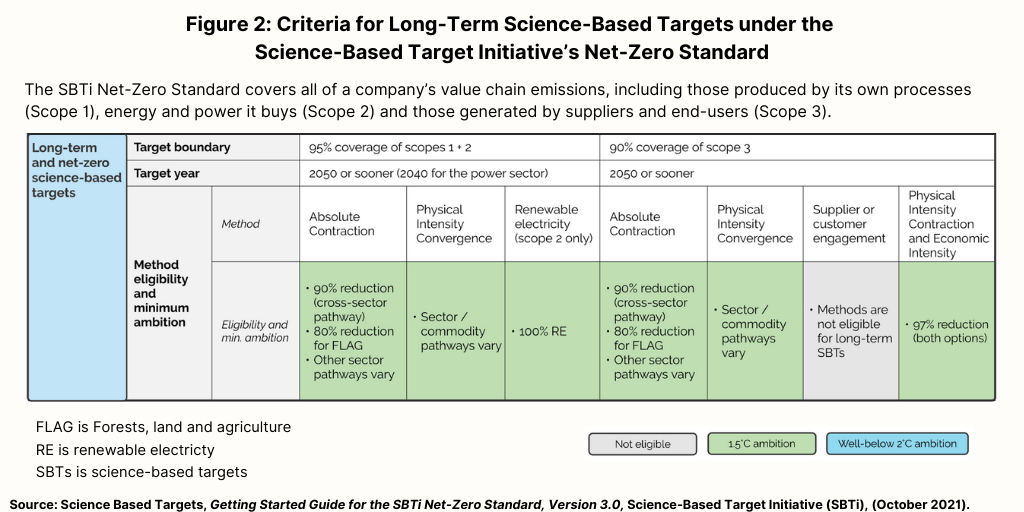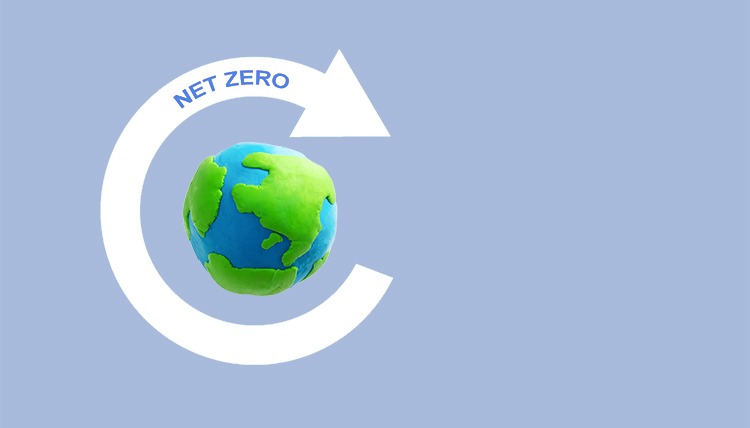Sustainability Metrics: Net-Zero Emissions
AstraZeneca is one of seven companies to have its sustainability plan verified under a new science-based Net-Zero Standard for corporate net-zero emissions target-setting. What’s behind the standard?
By Miranda Greenberg, Editorial Coordinator, and Patricia Van Arnum, Editorial Director, DCAT
Corporate net-zero emissions target-setting
In line with the Paris Agreement, an international treaty on climate change, companies are incorporating net-zero emission targets as part of their sustainability strategies. More than 195 countries have signed the Paris Agreement, which set a goal to limit global warming to well below 2°C, preferably to 1.5°C, compared to pre-industrial levels. To achieve this, the overall goal is to cut greenhouse emissions globally by half before 2030 and to reach net-zero emissions by 2050. “Net-zero” emissions refer to a state in which the greenhouse gases going into the atmosphere are balanced by their removal out of the atmosphere. This goal takes collective action by governments and businesses, but a challenge for businesses is setting common standards for net-zero emission targets.
To address that need, the Science Based Targets initiative (SBTi), a global body, has launched a Net-Zero Standard said to be the world’s first framework for corporate net-zero target-setting in line with climate science. Launched in late October (October 2021), seven companies, including AstraZeneca, are the first companies worldwide to have science-based net-zero targets verified by the SBTi.
SBTi and its Net-Zero Standard
The SBTi’s Net-Zero Standard is a science-based certification of companies’ net-zero targets in line with the Paris Agreement’s goal of keeping planetary warming to 1.5°C. SBTi is a global collaboration between the United Nations Global Compact, CDP, the World Resources Institute, and the World Wide Fund for Nature, and its work represents one of the commitments of the We Mean Business Coalition, a group of seven business-focused climate nonprofit organizations.
The United Nations Global Compact is a non-binding UN pact to encourage businesses and firms worldwide to adopt sustainable and socially responsible policies and to report on their implementation. CDP is a non-profit organization that runs a global disclosure system for investors, companies, cities, states, and regions to manage their environmental impact. The World Resources Institute is a global research organization that works with governments, businesses, multilateral institutions, and civil society groups to address seven global challenges, including climate change. The World Wide Fund for Nature is focused on environmental conservation.
Last month (November 2021), the SBTi and the UN Global Compact announced that more than 1,000 companies are setting 1.5°C-aligned science-based targets as part of a global campaign to scale corporate climate ambition. The Business Ambition for 1.5°C campaign was initiated by the UN Global Compact in 2019 and is led by the SBTi. The campaign was launched in response to a special report by the Intergovernmental Panel on Climate Change, a UN intergovernmental body, that specified to avoid the worst effects of climate breakdown, global temperature increase must be capped at 1.5°C, and to achieve this goal, emissions must be halved before 2030 and reach net-zero before 2050.
Overall, the UN Global Compact is composed of more than 9,500 companies, and of this total, more than 1,000 have committed to set 1.5°C-aligned science-based targets through the Business Ambition for 1.5°C campaign. More than 600 of these companies have also committed to reach net-zero emissions across their value chain by no later than 2050. Companies can commit to set net-zero targets and join the campaign by completing and returning a commitment letter. The SBTi will begin validating net-zero targets from January 2022.
Seven companies, including AstraZeneca, are the first globally to have their science-based net-zero targets verified by the SBTi. Other companies involved with the SBTi and its process with either a near-term or net-zero target (i.e., near or long-term) include: AbbVie, Bayer, Biogen, Daiichi Sankyo, Eisai, Gilead Sciences, GlaxoSmithKline, Johnson & Johnson, Merck & Co., Merck KGaA, Novartis, Novo Nordisk, Sanofi, Takeda, Teva Pharmaceutical as well as Catalent, Thermo Fisher Scientific among others.
SBTi’s Net-Zero Standard: the metric
Companies adopting the SBTi’s Net-Zero Standard will be required to set both near- and long-term science-based targets across all scopes. The SBTi Net-Zero Standard covers all of a company’s value chain emissions, including emissions by its own processes (Scope 1), energy and power it buys (Scope 2), and emissions generated by suppliers and end-users (Scope 3).

Figure 1 (see above) and Figure 2 (see below), respectively, outline the key criteria for near- and long-term science-based targets under the SBTi’s Net-Zero Standard. Near-term targets cover immediate emissions reductions for the next 5-10 years while long-term science-based targets determine the total level of decarbonization by 2050 or before. Through the Standard, the SBTi clarifies that science-based net-zero requires companies to achieve deep decarbonization of 90-95% before 2050. At that point, a company must neutralize any limited residual emissions that are not yet possible to cut. The SBTi sets clear parameters that these residual emissions, which must be neutralized through carbon removals, cannot exceed 5-10% of a company’s emissions depending on its sector. Neutralization activities can take the form of technological removals (i.e., direct air capture with geological storage) and nature-based solutions (i.e., reforestation).

The emissions reporting used in the SBTi Standard is based on the Greenhouse Gas (GHG) Protocol, widely used greenhouse gas accounting standards that provide a framework for businesses, governments, and other entities to measure and report their greenhouse gas emissions. Approximately 92% of Fortune 500 companies responding to the CDP used the GHG Protocol directly or indirectly through a program based on the GHG Protocol, based on a 2016 analysis.
Under the SBTi’s Net-Zero Standard, a company-wide Scope 1 and 2 emissions inventory (i.e., emissions produced by a company’s own processes and the energy and power it buys) must be completed as defined by the GHS Protocol Corporate Standard and the GHG Protocol Scope 2 Guidance. Companies must complete a Scope 3 screening (i.e., emissions generated by suppliers and end users) for all relevant Scope 3 categories considering the minimum boundary of each category per the GHG Protocol Corporate Value Chain (Scope 3) Accounting and Reporting Standard. Companies may use the GHG Protocol Scope 3 Guidance, Scope 3 Evaluator, and CDP Supply Chain Program as resources. A company can commit to setting a science-based target in parallel to performing a full Scope 1, 2, and 3 GHG inventory (i.e., emissions by a company’s own processes, the energy and power it buys, and emissions generated by suppliers and end-users) (See Figures 1 and 2).
Under the SBTi’s Net-Zero Standard, long-term science-based targets indicate the degree of emission reductions companies need to ultimately reach in order to achieve net-zero under the Standard’s criteria. Most companies will need to reduce emissions at least 90% to reach net-zero. These targets must be achieved no later than 2050 (or 2040 for the power sector).
SBTi’s Net-Zero Standard: the verification process
To have their net-zero targets verified by SBTi, companies first commit to setting science-based targets by sending a commitment letter that establishes their intent to set targets. After sending a commitment letter, companies can then book their validation slot and have 24 months to submit their target submission form.
When targets are submitted to the SBTi, they first go through an initial screening to ensure that basic criteria are met. After the screening, companies will be asked to sign the target validation service contract. Once signed, the SBTi will assess the submitted targets and communicate its decision within 30 business days of contract execution.
If targets are not approved, SBTi says that companies should review the feedback and resubmit targets as soon as they are able. The standard validation service includes a second assessment for no additional charge within six months of the first assessment. Following approval, the organization should disclose their emissions. Recommendations include disclosure through CDP, annual reports, and sustainability reports.
AstraZeneca among first companies with targets verified
Last month (November 2021), SBTi reported that seven companies, including AstraZeneca, CVS Health, a healthcare and pharmacy company, and Ørsted, an energy company, were the first companies worldwide to have science-based net-zero targets verified by the SBTi. The others were: JLL, a global real estate company; Dentsu International, a media and digital marketing communications company; Holcim, a buildings material company; and Wipro, an information technology company.
AstraZeneca has dubbed its strategy for achieving net-zero emissions as “Ambition Zero Carbon.” Last year (January 2020), AstraZeneca provided details of that strategy, which involves plans to invest $1 billion to achieve zero-carbon emissions from its global operations by 2025 and to ensure that its entire value chain is carbon-negative by 2030.
In order to achieve zero carbon by 2025, AstraZeneca plans to reduce total energy consumption by 10%, double energy productivity (based on a 2015 baseline), convert 100% of its energy consumption to renewable sources for both power and heat, and have a 100% electric fleet. In addition, the company has pledged to engage its suppliers to reduce their direct emissions through 2030 and identify carbon removal options that will lead to more carbon dioxide removed from the atmosphere than added to it. This will result in AstraZeneca becoming carbon negative across its entire value chain by 2030. In addition, the company is involved in a reforestation plan as trees naturally remove carbon dioxide and can mitigate the effects of climate change. The company is partnering with reforestation organizations and governments in a number of countries to plant 50 million trees over the next several years; the first programs started in 2020.
Going forward
Going forward, the SBTi plans to further evaluate and expand the Standard beyond a company’s value chain and evaluate what role SBTI should play in incentivizing investments in climate-change mitigation.
The SBTi’s Net-Zero Standard was developed with an Expert Advisory Group (EAG) composed of 37 members from science, business, academia, and civil society. The SBTi developed detailed criteria and guidance in regular consultation with the EAG as well as with the SBTi’s Scientific and Technical Advisory Groups. It also requested feedback from stakeholders to improve the Standard through two public consultations and a company road test.
The SBTi is conducting further research to inform the “net” of net-zero, i.e., the compensation and neutralization criteria elements of the Standard. It is working with the advisory firm, Systemiq, to explore how SBTi might encourage companies to go beyond their science-based targets to mitigate emissions outside their value chains.
In addition, the SBTi says it recognizes “the urgent need to scale up finance in the near-term to support climate mitigation,” and is undertaking research to understand what role it should play in incentivizing and enabling these investments. In the coming months (as reported on December 6, 2021), the SBTi says it will use the results of this work to consider various models through consultation with the EAG and other stakeholders and will decide on a course of action in early 2022.







